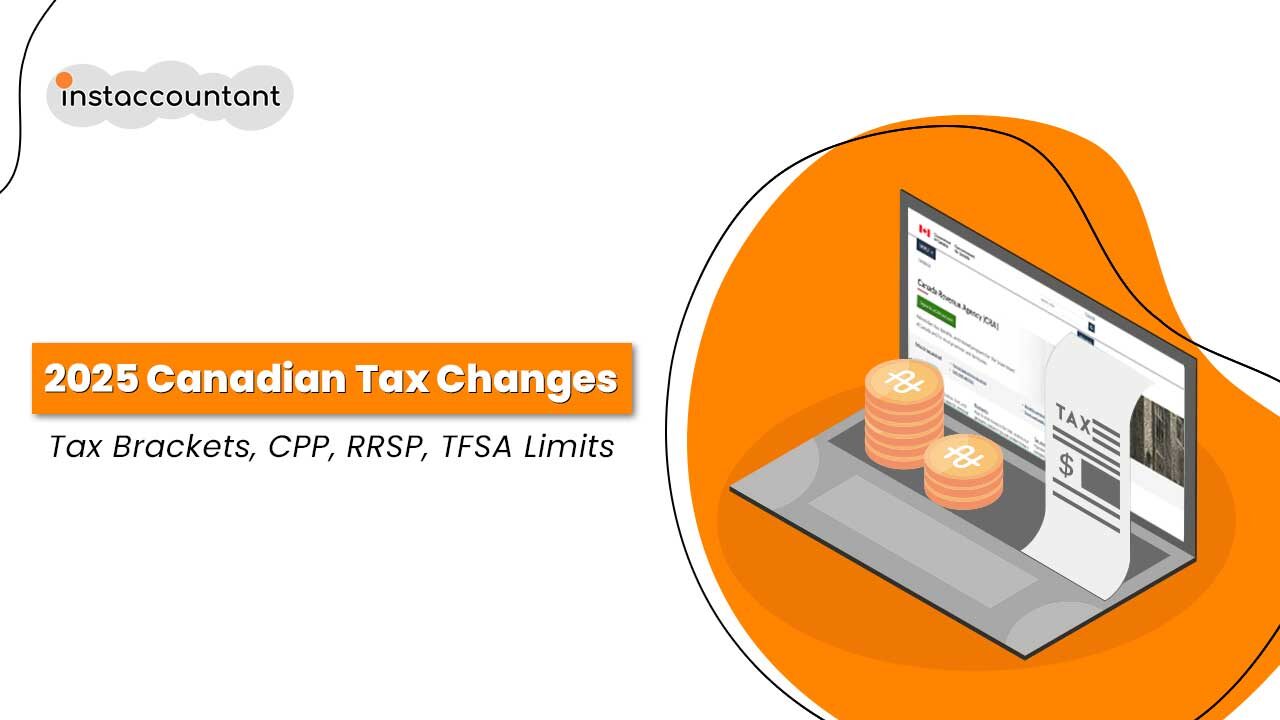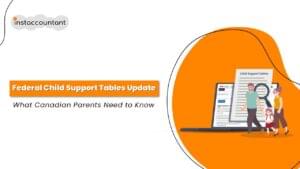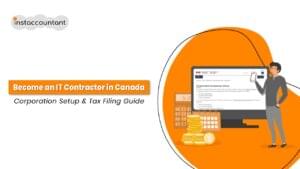The Canada Revenue Agency (CRA) has rolled out its 2025 updates, bringing changes to tax brackets, contribution limits, and benefit thresholds that will impact Canadians from every walk of life—whether you’re an employee, self-employed, or planning for retirement.
These CRA updates aren’t just numbers—they’re opportunities. Opportunities to plan smarter, save more, and ensure your financial goals are within reach. With inflation affecting everything from paychecks to pensions, understanding these changes is crucial to optimizing your 2025 tax strategy.
Here’s a detailed breakdown of the Canadian tax changes for 2025 and how they may affect you:
Key CRA Changes at a Glance
| Category | 2025 Update |
|---|---|
| Federal Tax Brackets | Indexed to inflation (2.7%) |
| Basic Personal Amount (BPA) | Increased to $16,129 |
| CPP Contributions | Max earnings: $71,300, max contribution: $4,034.10 |
| EI Premiums | Max insurable earnings: $65,700 |
| TFSA Contribution Limit | $7,000 |
| RRSP Contribution Limit | $32,490 |
| OAS Repayment Threshold | $93,454 |
| Prescribed Interest Rate | Decreased to 4% |
1. Federal Tax Brackets
For 2025, all five federal income tax brackets have been indexed by the 2.7% inflation adjustment.
| Income Range | Tax Rate |
|---|---|
| $0 to $57,375 | 15% |
| $57,375 to $114,750 | 20.5% |
| $114,750 to $177,882 | 26% |
| $177,882 to $253,414 | 29% |
| $253,414 and above | 33% |
Provincial Tax Brackets: Each province applies its own tax rates and brackets, often indexed to their specific inflation factors. Be sure to review your province’s updates for 2025.
2. Basic Personal Amount (BPA)
The Basic Personal Amount (BPA) represents the amount of income a Canadian can earn without paying federal taxes.
| BPA Details | 2025 Amount |
|---|---|
| Basic Personal Amount (BPA) | $16,129 |
| Tax Credit Value (15% of BPA) | $2,419 |
| BPA Reduction for High Earners | Begins above $177,882 |
| Fully Phased Out (High Income) | Above $253,414 |
For high earners, the BPA phases out starting at $177,882 and fully phases out at $253,414.
3. Canada Pension Plan (CPP) Contributions
The 2025 CPP contributions are as follows:
| CPP Contributions | Details |
|---|---|
| Contribution Rate (Employee/Employer) | 5.95% |
| Maximum Pensionable Earnings | $71,300 |
| Basic Exemption | $3,500 |
| Max Contribution (Employee/Employer) | $4,034.10 |
| Self-Employed Rate | 11.9% |
| Max Contribution (Self-Employed) | $8,068.20 |
Second CPP Contribution (CPP2)
For high-income earners, CPP2 contributions for the additional Year’s Additional Maximum Pensionable Earnings (YAMPE) are:
| CPP2 Contributions | Details |
|---|---|
| Additional Max Earnings (YAMPE) | $81,200 |
| Contribution Rate (Employee/Employer) | 4% |
| Max Contribution (Employee/Employer) | $396.00 |
| Max Contribution (Self-Employed) | $792.00 |
4. Employment Insurance (EI) Premiums
Employment Insurance (EI) premiums for 2025 will see slight increases:
| EI Premiums | Regular Rate | Quebec Rate |
|---|---|---|
| Contribution Rate (Employee) | 1.64% | 1.31% |
| Maximum Contribution (Employee) | $1,077.48 | $860.67 |
| Maximum Insurable Earnings | $65,700 | $65,700 |
Employers will contribute at 1.4 times the employee rate.
5. TFSA Contribution Limit
The Tax-Free Savings Account (TFSA) contribution limit for 2025 is $7,000, bringing the cumulative contribution room (since 2009) to $103,000, assuming no withdrawals.
| Year | Annual Limit | Cumulative Limit |
|---|---|---|
| 2023 | $6,500 | $88,000 |
| 2024 | $7,000 | $94,500 |
| 2025 | $7,000 | $103,000 |
6. RRSP Contribution Limit
The Registered Retirement Savings Plan (RRSP) contribution limit for 2025 is $32,490, calculated as 18% of your 2024 earned income, up to this limit.
| Details | Amount |
|---|---|
| Maximum Annual Contribution | $32,490 |
| Percentage of 2024 Earned Income | 18% |
| RRSP Deadline | March 1, 2025 |
Unused contribution room from prior years can be carried forward to 2025.
7. Old Age Security (OAS)
The OAS repayment threshold rises to $93,454. Seniors with incomes above this threshold will see a gradual clawback in their OAS payments.
8. Prescribed Interest Rate
The CRA’s prescribed interest rate for Q1 2025 decreases to 4%, affecting taxable benefits, related-party loans, and other financial arrangements.
| Interest Type | Rate |
|---|---|
| Base Rate | 4% |
| CRA Refund Rate | 6% |
| CRA Tax Debt Rate | 8% |
This change affects low-interest loans, taxable benefits, and other related-party transactions. If you owe the CRA money, the interest rate on unpaid taxes and penalties will rise to 8% in 2025.
Practical Implications of These Changes
- Income Planning: Higher tax brackets and the increased BPA mean slightly lower taxes for most Canadians.
- Retirement Savings: Maximize your TFSA and RRSP contributions to take full advantage of these limits.
- Payroll Adjustments: Employers and employees must account for higher CPP and EI contributions.
- Interest Rate Strategies: Lower prescribed rates present opportunities for tax-efficient loans and intra-family lending.
Optimize Your 2025 Tax Strategy
Navigating Canadian tax updates can be complex, but they also bring opportunities to streamline your financial strategy for the 2025 tax season.
For personalized tax advice or bookkeeping solutions, connect with Instaccountant. We specialize in helping individuals and businesses adapt to tax changes, maintain compliance, and uncover savings opportunities.
Let’s make your 2025 financial goals a reality—together!




